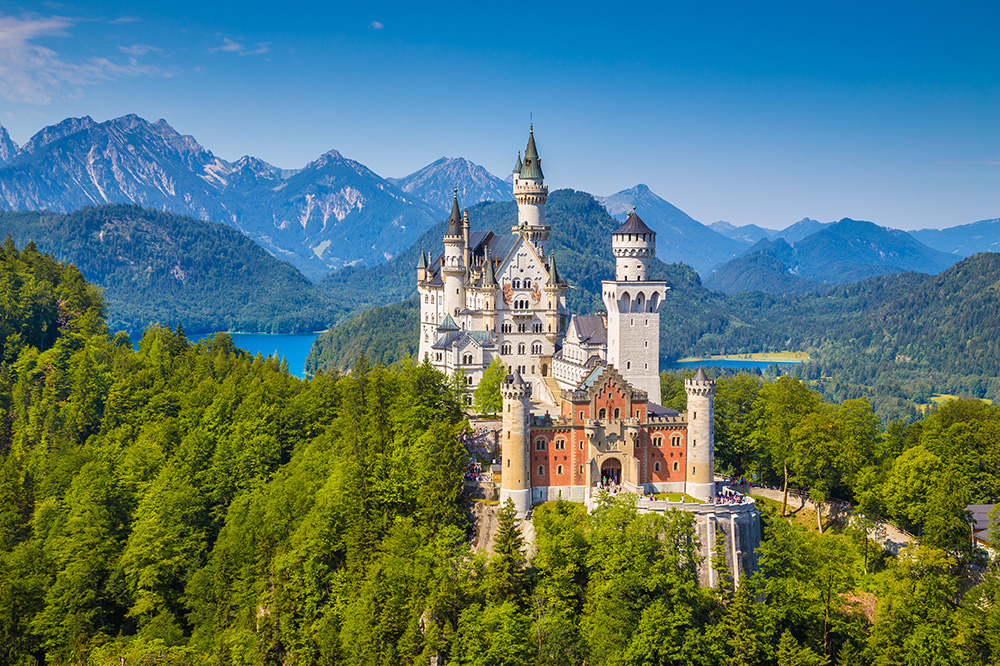Neuschwanstein
NEUSCHWANSTEIN
Neuschwanstein Castle is a nineteenth-century Romanesque Revival palace on a rugged hill above the village of Hohenschwangau near Füssen in southwest Bavaria, Germany and it was an inspiration for Disneyland’s Sleeping Beauty Castle.


King Ludwig II planned this fairy-tale pile himself, with the help of a stage designer rather than an architect. He envisioned it as a giant stage on which to recreate the world of Germanic mythology, inspired by the operatic works of his friend Richard Wagner. The most impressive room is the Sängersaal (Minstrels’ Hall), whose frescos depict scenes from the opera Tannhäuser.
Built as a romantic medieval castle, work started in 1869 and, like so many of Ludwig’s grand schemes, was never finished. For all the coffer-depleting sums spent on it, the king spent just over 170 days in residence.Completed sections include Ludwig’s Tristan and Isolde–themed bedroom, dominated by a huge Gothic-style bed crowned with intricately carved cathedral-like spires; a gaudy artificial grotto (another allusion to Tannhäuser); and the Byzantine-style Thronsaal (Throne Room) with an incredible mosaic floor containing over two million stones. The painting opposite the (throneless) throne platform depicts another castle dreamed up by Ludwig that was never built. Almost every window provides tour-halting views across the plain below.
